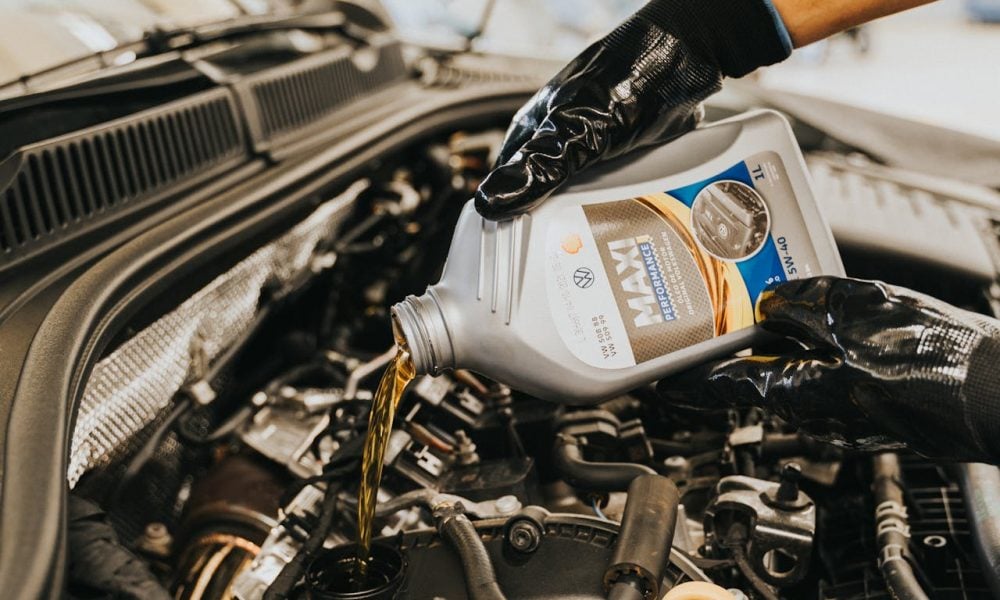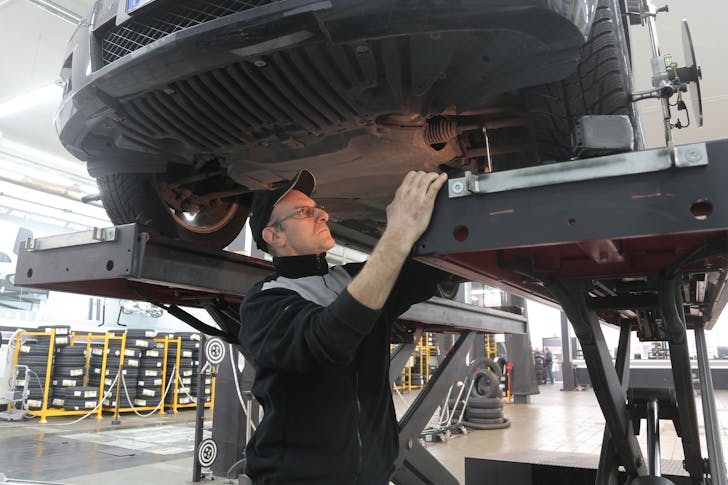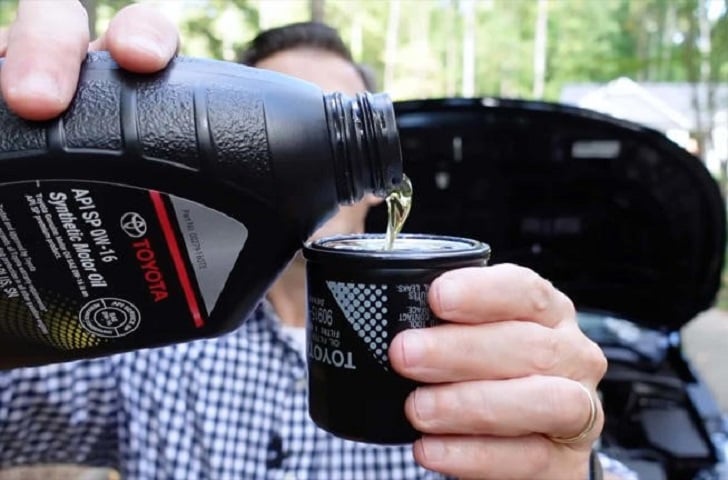
How to Change Engine Oil at Home in 10 Simple Steps

Maintaining your car’s engine is essential, but taking it to the shop for routine oil changes can be inconvenient and costly. Long waits, expensive service fees, and unnecessary upsells frustrate many drivers. The good news? You can save time and money by learning how to change engine oil at home. This comprehensive guide will explore simple steps to change engine oil and keep your vehicle running smoothly without breaking the bank.
Step 1: Raise the Vehicle
Start by safely raising your car to access the oil pan’s drain plug. Drive the vehicle onto ramps or use a jack and secure it with jack stands. Double-check the stability to prevent accidents. Working under an unstable vehicle is dangerous, so take this step seriously to avoid injuries.

Andrea Piacquadio | Pexels | To change your engine oil, raise your car safely to access the oil pan’s drain plug.
Step 2: Position the Catch Pan and Remove the Drain Plug
Place a catch pan under the oil pan to collect the old oil. Ensure the pan is large enough to hold the full volume. Use a socket wrench to loosen the drain plug, then remove it carefully by hand. Be cautious, as the oil may still be hot and could burn your skin.
Step 3: Let the Oil Drain and Inspect the Vehicle
Allow the old oil to drain fully into the catch pan. This process usually takes a few minutes. While waiting, inspect the area for signs of leaks, damage, or wear on visible components. Identifying issues early can save on repairs later.
Step 4: Reinstall the Drain Plug and Torque It Properly
Clean the drain plug and oil pan threads before reinstalling. Check the condition of the plug threads for damage and replace the plug if needed. Tighten it with a socket wrench to the torque specification provided in your vehicle’s owner’s manual. This ensures a secure seal without over-tightening.
Step 5: Remove the Old Oil Filter
Locate the oil filter, which is often accessible by hand or with an oil filter wrench. Turn the filter counterclockwise to remove it. Be prepared for some oil to spill from the filter as it’s removed. Handle it carefully to minimize messes and avoid dropping it.
Step 6: Clean the Mounting Surface and Inspect the O-Ring
Clean the mounting surface after removing the oil filter to remove any residue. Check that the old O-ring isn’t stuck to the engine’s mounting plate. A leftover O-ring can cause leaks when the new filter is installed, so this step is essential.
Step 7: Prepare the New Filter and Install It
Lubricate the O-ring on the new oil filter with fresh oil to ensure a smooth fit. Screw the filter onto the mounting plate by hand until it’s snug. Tighten it an additional three-quarters to one full turn to secure it. Follow the filter’s specific instructions for the best results.

Brian Silvestro | MSN | To ensure a smooth fit, lubricate the O-ring on the new oil filter with fresh oil.
Step 8: Add New Oil to the Engine
Remove the oil fill cap on the top of the engine and place a funnel in the opening. Pour the recommended amount and type of oil specified in your owner’s manual into the funnel. Using the correct viscosity ensures optimal engine performance and longevity.
Step 9: Replace the Oil Fill Cap and Start the Engine
Securely replace the oil fill cap and start the engine. Let it idle for about 30 seconds while observing the drain plug and oil filter for leaks. If you spot any oil leaks, stop the engine and address the issue immediately to prevent further problems.
Step 10: Check the Dipstick Level After Lowering the Vehicle
Once the engine is off, allow the oil to settle for about 30 seconds. Lower the car from the jack or ramps. Remove the dipstick, wipe it clean, and reinsert it fully. Pull it out again to check the oil level. Add more oil as necessary to match the level indicated in the manual.
More inAdvice
-
`
U.S. Reduces Tariffs on Japanese Cars to 15% Under Trump’s Deal
In a move reshaping U.S.-Japan trade relations, former President Donald Trump confirmed a new agreement that slashes tariffs on Japanese car...
August 9, 2025 -
`
Adults in Ohio Face Stricter Rules to Obtain Driver’s License
Ohio has passed a new law that will change the way adults under 21 get their driver’s licenses. Signed into law...
July 31, 2025 -
`
Gen Z Craves Career Guidance, But Their Parents Are Struggling Too
Gen Z is stepping into the future with curiosity and ambition—but they’re not doing it alone. A growing number of teens...
July 25, 2025 -
`
Do Car Insurance Companies Offer Pay-As-You-Go Plans?
Car insurance premiums often feel unfair to people who rarely drive. Yet, most traditional auto policies still charge a fixed monthly...
July 17, 2025 -
`
Why the Koenigsegg Sadair Spear Is the Ultimate Hypercar Beast
Koenigsegg has revealed a new beast—the Sadair’s Spear. Tuning its focus on raw performance and brutal speed, this hypercar marks the...
July 11, 2025 -
`
Which States Have the Safest—and Riskiest—Drivers in America?
Driving safety isn’t just about skill. It’s also about location. A recent nationwide report shines a spotlight on where drivers are...
July 4, 2025 -
`
How to Save on Tesla Car Insurance Without Compromising Coverage
Owning a Tesla often brings savings on fuel and a futuristic driving experience, but the conversation changes quickly when it comes...
June 26, 2025 -
`
10 Weird Cars That Turned Heads and Won Hearts
Some cars turn heads with speed, others with luxury—but a rare few grab your attention simply by being delightfully strange. From...
June 20, 2025 -
`
Next-Gen Jeep Cherokee Expected to Arrive by Late 2025
After a break of two years, Jeep is prepared to relaunch the Cherokee brand. The automaker confirmed the return with fresh...
June 12, 2025















You must be logged in to post a comment Login